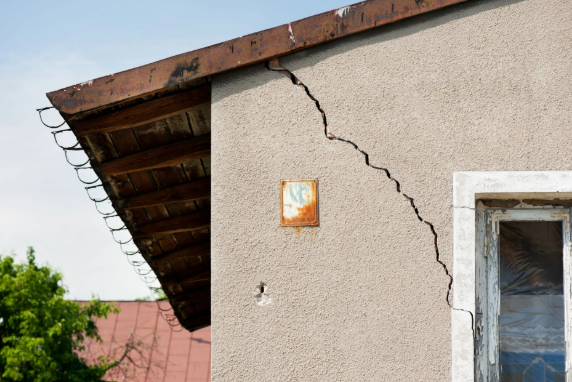What to Do If Your Tenants Cause Damage to Your Property
- July 14, 2024
As a landlord, one of the risks you take when renting out a property is the potential for damage caused by tenants. While most tenants are responsible and take care of the property they’re renting, accidents, neglect, or even intentional damage can sometimes occur. If you find yourself dealing with property damage caused by tenants, it’s important to know how to handle the situation effectively to protect your investment and ensure you’re following the law.
Here’s a step-by-step guide on what to do if your tenants cause damage to your property.

1. Document the Damage
The first step is to thoroughly document the damage. As soon as you notice any damage, take clear and detailed photographs of the affected areas. Make sure to capture all angles of the damage and any items that are broken or destroyed. If necessary, write a detailed description of the damage and the specific areas affected (walls, flooring, appliances, etc.).
It’s also a good idea to make note of the date when you discovered the damage, as this will be helpful if you need to take further legal action or file an insurance claim. Documentation is key when it comes to resolving disputes and holding tenants accountable for the damage they’ve caused.
2. Review the Lease Agreement
Before taking any action, review the terms of the lease agreement. The lease should outline the tenant’s responsibilities regarding property care and maintenance, as well as the procedures for handling damage. Check if the tenant is responsible for repairs under specific conditions or if the lease includes clauses about damages caused by neglect, accidents, or intentional actions.
If the damage falls under the tenant’s responsibility (for example, if they were required to maintain the property or if the damage was caused by negligence), you’ll need to follow the appropriate steps for repair and reimbursement.
3. Communicate with the Tenant
Once you’ve documented the damage and reviewed the lease, reach out to the tenant to discuss the situation. Ideally, you should have an in-person meeting or a phone call to talk about what happened, how the damage occurred, and what steps need to be taken to resolve the issue.
If the damage is accidental or minor, the tenant may be willing to cover the cost of repairs or take steps to fix the issue themselves. If the damage is more serious or if it’s a result of negligence or misuse, you may need to hold the tenant accountable and seek reimbursement.
In cases of intentional damage, the tenant should be informed that they will be held financially responsible for repairs.
4. Assess the Cost of Repairs
Get estimates for the cost of repairing the damage. This could involve contacting contractors, handymen, or specialists (if the damage is extensive or specialized, such as structural damage). Depending on the extent of the damage, you may need to get a few quotes to ensure you’re getting a fair price for the repairs.
If the damage is severe and requires significant repairs, you may want to get an official property inspection to determine the full scope of the damage and ensure that nothing was missed in your assessment.

5. Use the Security Deposit
One of the main tools landlords have for dealing with damage is the security deposit. Most lease agreements require tenants to pay a security deposit before moving in, which is meant to cover any damages that may occur during the tenancy.
If the damage is within the limits of the security deposit, you can use this money to cover the cost of repairs. Be sure to keep records of any expenses related to the damage and repairs, as you’ll need to provide the tenant with an itemized list of deductions from their security deposit, along with any remaining balance, if applicable.
Remember that in many places, you must return the unused portion of the security deposit within a certain timeframe, usually 30 days after the tenant vacates the property. If the damage exceeds the amount of the deposit, you may need to pursue additional steps to recover the rest of the costs.
6. Consider Legal Action if Necessary
If the damage exceeds the security deposit or the tenant refuses to pay for repairs, you may need to consider legal action. In some cases, tenants may not take responsibility for damage, and pursuing them for payment may be your only option.
Before you proceed with legal action, it’s always a good idea to try to resolve the situation amicably. If this doesn’t work, you may need to take the tenant to small claims court, where you can seek reimbursement for the cost of repairs.
Be sure to consult with a real estate attorney to understand your legal rights and options based on your local laws. Keep in mind that legal proceedings can be time-consuming and costly, so it’s important to weigh the pros and cons of pursuing this option.
7. Prevent Future Damage with Clear Lease Terms
To prevent future damage and disputes, ensure that your lease agreement clearly outlines tenant responsibilities regarding the maintenance and care of the property. Consider adding clauses that specify the tenant’s obligation to report damage promptly, as well as the consequences of causing damage (such as the requirement to pay for repairs or replace damaged items).
Regular property inspections can also help identify potential issues before they become major problems. Having a well-maintained property and a clear understanding of responsibilities can help mitigate the risk of damage in the future.
8. Consider Renters Insurance
While it’s not required, suggesting or even requiring tenants to have renters insurance can be a smart move. Renters insurance typically covers tenant-caused damage to property (within reason) and can provide a layer of protection for both you and your tenant. It’s a good idea to ask your tenants to provide proof of insurance at the start of the lease term.
Dealing with tenant-caused damage can be frustrating, but as a landlord, it’s essential to handle the situation in a methodical and legally compliant manner. By documenting the damage, reviewing the lease, communicating with the tenant, and using your security deposit, you can often resolve the issue without significant hassle. If necessary, legal action can help recover the costs of repairs, and preventive measures like a solid lease agreement and renters insurance can reduce the risk of future problems.
Related Posts
What are Carrying Costs? Sell Your Texas House Fast and Avoid Carrying Costs
What are Carrying Costs? Sell Your Texas House Fast and Avoid Carrying Costs If you’re trying to sell your house
What to Do If You Owe Back Property Taxes
What to Do If You Owe Back Property Taxes Owing back property taxes can be stressful, but taking action quickly
Address: 40 E. Montgomery Ave. Ardmore, PA 19003
Phone: 610 439 9332
Copyright © 2024 Residence Investors.
